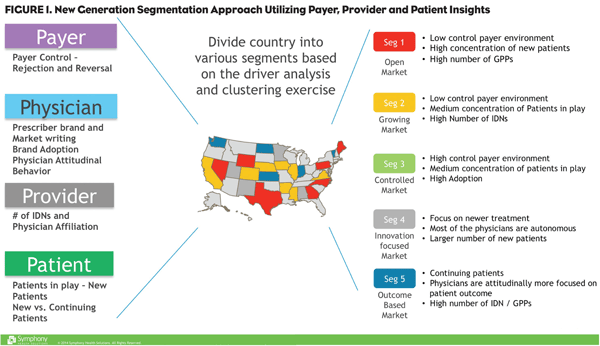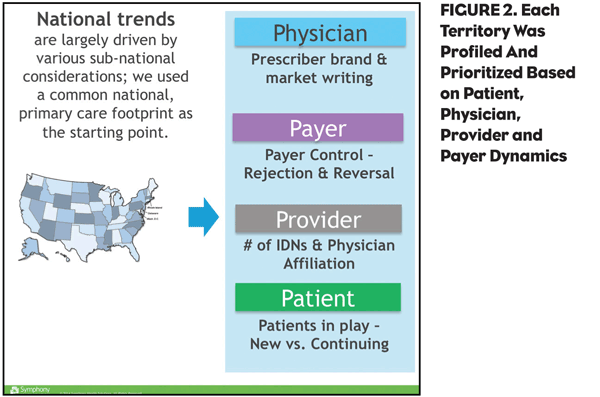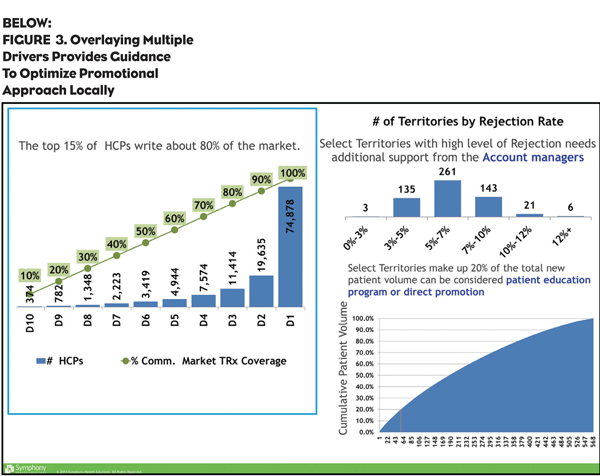Gone are the days when sheer volume—feet on the street—was enough to ensure the success of a launch. As we have discussed in previous columns, the prescriber is no longer the sole decision maker through which brands are ultimately dispensed. Understanding the local influences on prescription purchase behaviors and how to use them to identify true opportunity is more crucial than ever.
The Symphony team recently examined the large primary care market to determine the best use of promotional resources at launch. In this analysis, we studied a myriad of data sources to understand prescribing practices, payer and IDN influence and access barriers, as well as opportunities (Figure 1).
Key Attributes Allowed for Optimal Resourcing
While volume and prescribing potential remain important when it comes to sizing and allocating promotional resources, a myriad other factors affect the success of one brand over another.
- Payer access favorability
- Patient price sensitivity
- Influx of new patients
- Newly diagnosed
- Newly treated
- Patient ability to pay
- Presence and influence of IDNs, ACOs or other Health Systems
- Prevalence of larger group practices
The variations in different geographic markets are endless and the resulting mix of influencers and influences will help to shape a brand’s success unless specific strategies are deployed to exploit opportunities or mitigate threats.
Approach
Examining the prescribing patterns and influencers on dispensed prescriptions allowed the team to identify a subset of territories with the most potential and to resource them accordingly with sales reps. The analysis also uncovered a subset of territories that required clearly defined contracting strategies and additional support from account managers. Another set of territories had a heavy IDN and hospital system presence, which exerted strong influence on prescribing. Identifying these territories allowed the brand to allocate IDN account managers where they were needed most (Figure 2).
Through our research, other insights emerged such as:
- Territories with a higher than average number of high scrip writers, suggesting the need for additional sales support.
- Territories with an unusually high number of “in play” patients in the therapeutic category, suggesting representation of key targets for patient education efforts or direct-to-consumer efforts.
- A sizeable number of territories with a higher than average number of large group practices, which may be best served by “portfolio representatives.”
- A number of territories with overall low volume, suggesting a non-personal promotion strategy.
What this and other similar analyses confirmed is that one size does not fit all. The ability to take a holistic view of your market, understand the influences of the various stakeholders and the inter-relationships is critical. Bringing the many diverse inputs together in a meaningful way allows the brand manager to prioritize limited resources in order to maximize promotional effectiveness (Figure 3). Whether you are faced with a launch or trying to navigate the ever-changing healthcare landscape to ensure brand success, zeroing in on the influences that can help you—or hurt you—is critical to managing ongoing success.







